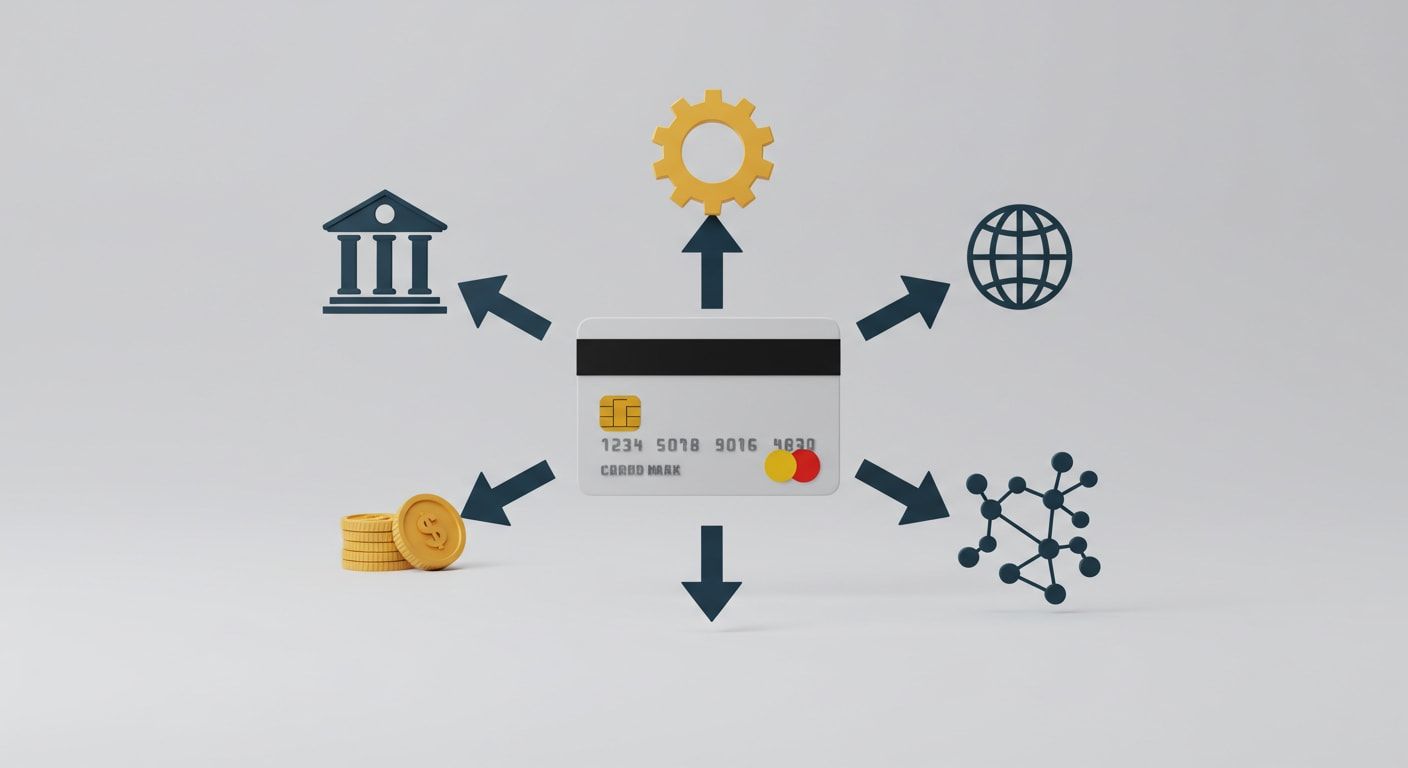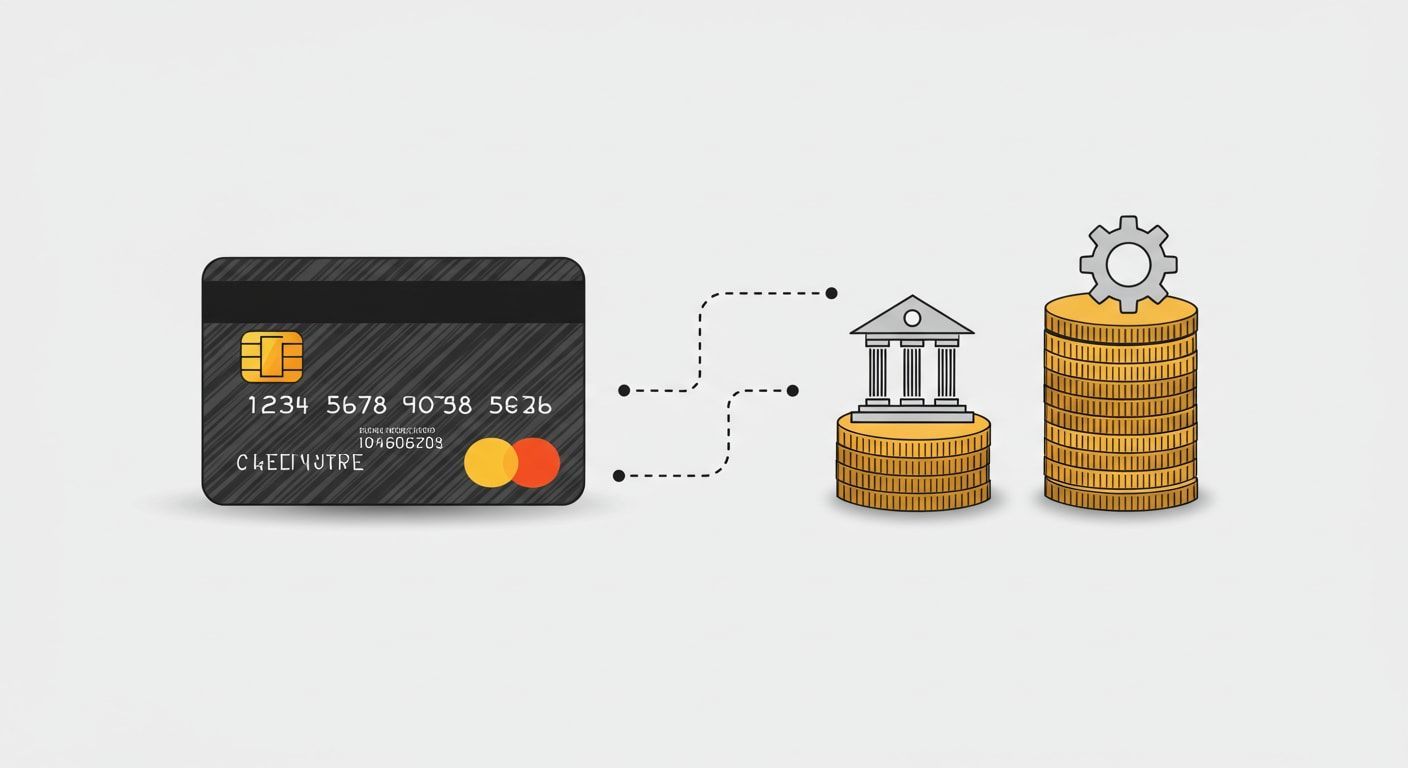Tiered vs. Interchange-Plus Pricing: What's Best for You?

Payment processing fees can cost your business thousands of dollars every month if you pick the wrong pricing structure. In fact, many business owners end up paying up to 60% more than they should because they don't understand how their processor structures fees across multiple pricing tiers and methods.
While there are many different pricing models, we're going to be discussing the tiered pricing and the interchange-plus model in this guide. Whichever you decide to choose, your choice can have a direct impact on your profits.
That said, many business owners fail to assess the true costs of the pricing models due to a lack of knowledge on their part and hidden fees associated with the processors.
At Momentum Growth Partners, we offer a wide range of consultancy services, including trusted payment processor consulting, to high-volume businesses and large enterprises. Our skilled and experienced specialist can help you explore the impact of the different pricing structures on your business's bottom line and choose the right pricing model.
In this blog, we will go over:
- The different components of processing fees
- What is tiered pricing?
- What is interchange-plus pricing?
- Which pricing model is the best for your business?
Let's get started!
Understanding Payment Processing Fees

While we've discussed processing fees in a lot more detail in our "What Is a Processing Fee and How to Reduce It?" blog, let's quickly refresh on the different types of processing costs. They include the following:
Interchange Fees
These are non-negotiable fixed rates. Interchange fees make up a huge chunk of payment processing fees. They're set by the card networks and paid to the customers' credit card issuing bank. The rates can vary based on many different factors.
Assessment Fees
These are also non-negotiable processing fees. Assessment fees go directly to the card network to pay for the infrastructure that's being used to process card transactions.
Processor Markup
This is the only part of the processing cost that you can negotiate. Processor markup refers to your processor's profit. Depending on the pricing structure you choose, processor markup can vary greatly and directly impact your processing costs.
Regardless of the pricing model you choose, it's crucial to audit your merchant statements at regular intervals. This approach can help you explore the biggest savings opportunities.
What Is Tiered Pricing?

In payment processing, a tiered pricing model refers to how processors group transactions into tiers. This is different from how businesses develop pricing tiers to target different customer segments across different price points.
The tiered pricing model promises simplicity but delivers the opposite. Processors bundle all fees into three neat pricing tiers, which include qualified, mid-qualified, and non-qualified.
Unlike flat rate pricing or volume pricing models, this approach can harm your customer base. Let's learn more about this pricing tier and its impact on your profits.
How Does Tiered Pricing Work?
Under the tiered pricing structure, your processor may quote a qualified rate of 1.79%. That sounds competitive, right? Unfortunately, business owners often fail to meet the strict criteria set by the processor due to:
- A lack of transparency: Since processors bundle all of the costs associated with this tiered pricing structure, plus their markup, into a single rate, this lack of transparency makes it difficult to determine if you're being overcharged.
- Strict criteria: Processors often set strict criteria to qualify for the lowest rates. It includes same-day batching, data capture through Address Verification Service, and the type of bank card being used. Any transaction that misses the tier, even slightly, is downgraded to a higher-priced tier. This particularly affects card-not-present transactions and debit card transactions, which often fall into different pricing tiers.
Another problem plaguing the tiered pricing strategy is the inflated effective rates. Since most transactions end up in the higher pricing tiers, the initial quoted rate can skyrocket. This can make it challenging to calculate tiered pricing processing costs, adversely affecting financial forecasting and budgeting.
When Should Businesses Choose a Tiered Pricing Model?
Momentum Growth Partners and our payment processing consultants do not recommend opting for the tiered pricing model. While it offers some benefits, including basic features that may attract customers, it can eat away at your profits, especially when your payment system becomes complex. What do we mean by that?
Well, tiered pricing has lower price points for certain categories. Businesses with low monthly volume and simple transactions (in-person card swipes) may benefit from this pricing model.
However, as you start to grow or introduce more payment methods, such as online transactions, you'll almost always end up in the higher pricing bracket. Unlike flat-rate pricing or subscription pricing models, tiered pricing can be highly unpredictable.
What Is Interchange-Plus Pricing?

Interchange-plus pricing shows you exactly what you pay for every transaction. Your processor charges you the actual interchange rate plus their fixed markup and per-transaction fee.
How Does Interchange-Plus Pricing Work?
When you receive your statement, you get to see clear line items, which are interchange fees and the processor's markup. It provides an explicit breakdown of the processing costs, allowing you to see what the card networks charge and what your processor charges. You won't find this level of transparency with flat-fee, cost-plus pricing, or membership pricing models that bundle costs.
Under interchange-plus pricing, there is no guesswork, bundle rates, or surprise charges. This model focuses on transparency and fair pricing. We'll discuss this in more detail in a later section of this blog.
What Are the Benefits of Interchange-Plus Pricing?
Interchange-plus pricing works much differently than feature-based pricing or subscription-based pricing models. It focuses on transaction-level transparency that can benefit businesses on every transaction they make.
In addition to that, there are several advantages of opting for the interchange-plus pricing, some of which include the following:
It's Easy to Budget for Processing Costs
With interchange-plus pricing, your processor's markup stays fixed while you pay the actual interchange rates. When the effective rate drops, you benefit immediately. This is not the case with tiered pricing, as processors pocket those savings.
It Provides Better Rates on Business Cards
Corporate and purchasing cards offer lower interchange rates when you provide detailed Level 2/Level 3 transaction data. Under this pricing model, the processor passes these savings directly to you. We've seen B2B companies save between 0.60% and 1.20% per transaction just by capturing Level 2 data properly.
The Statements Are Easy to Audit
Interchange-plus pricing makes it easy to audit every fee on your statement. If a processor charges the wrong interchange rate or adds hidden fees, you'll catch it immediately. This is not possible with tiered pricing, as overcharges disappear into bundled rates.
You Have the Power to Negotiate Better Rates
Since you're able to see the processor's markup, you can use that information to explore better options. Once you've received multiple offers, use that to negotiate a lower rate.
When Should Businesses Choose the Interchange-Plus Pricing Model?
Any business that's serious about controlling costs should consider opting for the interchange-plus pricing model.
Startups with online transactions, mid-market companies with multiple transaction types, and high-volume enterprises can all benefit from interchange-plus pricing. It's the best way to understand your processing fees and optimize your payment systems while maintaining a broad customer base.
If you want to learn ways to reduce your payment processing costs, don't forget to check out our "Reduce Payment Processing Costs Without Switching Processors" blog, where we provide valuable tips and expert insights.
Interchange-Plus vs. Tiered Pricing: Which One Is Better for Your Business?

There are several reasons why tiered pricing may cost your business more, but the three most important ones include the following:
- Most transactions never qualify for the lowest rate, affecting paying customers (merchants) across different pricing tiers.
- Processors hide their markup and other fees in the bundled rates, making it difficult to understand the actual costs.
- Tiered pricing doesn't pass on the savings associated with Level 2/Level 3 data capture.
Here's a quick example to explain the cost differences between the two:
A B2B software company has been using the tiered pricing model with an effective rate of 2.67% for years. On an annual volume of $12 million, the business pays roughly $320,000 in credit card processing fees.
After partnering up with an experienced payment processor consultant, the B2B software company realized that it could switch to an interchange-plus pricing model. This would bring the effective rate down to 1.94% with Level 2 data optimization.
With an annual $12 million in credit card transactions, this payment optimization strategy can help save the business $87,600 every year. This shows how tiered pricing best practices often fail in real-world scenarios and the savings you can enjoy with the right pricing model.
Interchange-plus pricing doesn't just help you understand more about your processing fees. It also lets you control the costs, optimize them, and ensure that you're not overpaying.
Other Factors to Consider When Choosing a Pricing Model

While cost is crucial when choosing a pricing model, there are other factors that you also need to consider. They include the following:
Junk Fees or Hidden Costs
While junk fees are often small costs, they eventually amount to a lot of money. And no, you can't use a credit card processing fee calculator to spot hidden costs.
That said, beware of the following junk fees:
- Monthly minimums: Processors may penalize businesses if their transaction volumes dip below a certain threshold. This can be discouraging for seasonal businesses or startups with fluctuating sales.
- PCI compliance fees: While PCI compliance is a mandatory industry standard, many processors charge PCI compliance fees separately.
- Statement fees: Some processors even charge statement fees, which can be absurd, as they send statements through digital channels.
Contract Terms
Sneaky processors play around with the contract terms to lock you into a bad deal. This is why it's crucial to always read the fine print for early termination fees, length of contract, and automatic renewals.
A trusted payment processor consultant can evaluate the contract to determine whether you should sign the document.
Integration with Existing Technology
Before choosing a pricing model, you need to check if the processor's technology works with your existing systems. Integration failures cost businesses thousands of dollars in development time and create operational headaches.
Also, make sure to test the customer support experience. You should only work with a processor that can maintain high customer satisfaction and excellent service levels. When payments fail, responsive support saves revenue for merchants and maintains customer loyalty for the processors and merchant service providers.
Security
You should partner with a processor who's committed to PCI compliance. Always check the premium features and fraud prevention tools they offer, as well as how the processor protects cardholders' sensitive data.
Optimize Your Payments and Reduce Processing Rates with Momentum Growth Partners

While interchange-plus pricing provides better effective rates than tiered pricing, it's important to consider other factors. In addition to that, payment processing costs aren't fixed expenses, which means there are many optimization opportunities you can explore.
At Momentum Growth Partners, we know how processors work and can help your business avoid paying unnecessary fees.
Call us at +1 (888) 682-8004 to schedule a free consultation with an experienced payment processor consultant and learn how we can reduce your processing costs while optimizing your payments.




